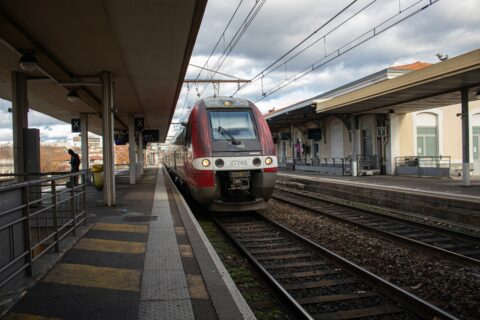Introduction to the impact of technology on transportation
Revolutionizing the way we get from point A to B, technology has become a driving force in the transportation industry. With each passing day, new advancements and innovations are reshaping the way we travel and explore our world. From self-driving cars that promise safer roads to ride-sharing services that offer convenience at our fingertips, the impact of technology on transportation is undeniable. In this blog post, we will delve into these exciting developments and explore how they are changing the way we move. So buckle up and join us on this journey as we navigate through the fascinating intersection of technology and transportation!
Advancements in self-driving cars and their potential benefits
Advancements in self-driving cars have captivated the world’s imagination, promising a future where we can sit back and relax while our vehicles do all the work. The potential benefits of this technology are vast and exciting.
Self-driving cars have the potential to drastically reduce human error on the roads. Studies show that over 90% of accidents are caused by human mistakes, whether it be from distracted driving or reckless behavior. With autonomous vehicles taking control, we can expect a significant decrease in accidents and fatalities.
Additionally, self-driving cars could revolutionize transportation for those who are unable to drive themselves. Elderly individuals or people with disabilities would gain newfound independence as they could travel without relying on others for assistance.
Not only will self-driving cars make our roads safer and more accessible, but they also have the potential to improve traffic flow. By communicating with each other and utilizing advanced algorithms, these vehicles can optimize routes and minimize congestion – leading to faster and more efficient travel times.
Furthermore, with fewer accidents comes reduced insurance costs for consumers. As autonomous technology becomes more prevalent, insurance companies may adjust their rates accordingly since there will be less risk involved in owning a self-driving car.
Let’s not forget about the environmental impact of self-driving cars. These vehicles are typically electric or hybrid-based which means they produce zero emissions when compared to traditional gas-guzzlers. This shift towards cleaner energy sources can help combat climate change by reducing pollution levels significantly.
In conclusion (sorry!), advancements in self-driving cars hold immense promise for improving safety on our roads, increasing accessibility for all individuals regardless of ability or age, optimizing traffic flow, lowering insurance costs, and contributing positively towards environmental sustainability through reduced emissions.
The rise of ride-sharing services and their impact on traditional transportation methods
The rise of ride-sharing services has undoubtedly shaken up the traditional transportation landscape. With just a few taps on our smartphones, we can summon a car to pick us up from wherever we are and take us to our destination. It’s convenient, affordable, and changing the way we think about getting around.
One of the biggest impacts of ride-sharing services is their ability to reduce traffic congestion in urban areas. Instead of each person driving their own car, multiple passengers can share a single vehicle, reducing the number of cars on the road. This not only eases traffic but also reduces carbon emissions and contributes to a cleaner environment.
Furthermore, ride-sharing has made transportation more accessible for those who may not have access to their own vehicles or public transportation options. People without cars or with limited mobility now have an alternative means of travel that is often cheaper than traditional taxis.
Another significant advantage of ride-sharing is its potential for cost savings. Many people find it more economical to use these services instead of owning and maintaining their own vehicles. Plus, there’s no need to worry about parking fees or fuel costs – simply pay for your trip and be done with it!
However, like any technological advancement, there are concerns that come along with ride-sharing as well. One major concern is related to safety – both for passengers and drivers themselves. Background checks need to be thorough in order to ensure passenger security while drivers must feel protected during every journey they undertake.
Ride-sharing services have undeniably transformed how we move from point A to B in cities across the globe. They offer convenience, affordability, reduced congestion,and accessibility all wrapped into one package!
Electric and hybrid vehicles: A game changer for the environment and fuel efficiency
Electric and hybrid vehicles have emerged as a game changer in the transportation industry, revolutionizing not only how we get from point A to B but also their impact on the environment. With increasing concerns about climate change and the need for sustainable solutions, these vehicles offer a promising alternative to traditional gasoline-powered cars.
One of the key benefits of electric and hybrid vehicles is their reduced carbon footprint. By running on electricity or combining electric power with fuel-efficient engines, they emit significantly fewer greenhouse gases compared to conventional cars. This not only helps combat air pollution but also reduces our dependence on fossil fuels, which are finite resources.
In addition to being environmentally friendly, electric and hybrid vehicles also boast impressive fuel efficiency. Unlike traditional cars that rely solely on internal combustion engines, these vehicles utilize advanced technologies such as regenerative braking and energy storage systems to maximize energy usage. This means less frequent trips to the gas station and more savings for drivers in the long run.
Moreover, governments around the world are offering incentives and subsidies for purchasing electric or hybrid vehicles. These initiatives aim to encourage consumers to make greener choices by making these eco-friendly options more affordable and accessible. As a result, more people are considering switching from conventional cars to electric or hybrid ones.
However, despite their numerous advantages, there are still some challenges that need addressing when it comes to electric and hybrid vehicles. Limited charging infrastructure remains a concern for many potential buyers who worry about finding convenient places to charge their vehicle’s batteries while on-the-go.
Furthermore, although advancements in battery technology have improved range capabilities over time, range anxiety is still prevalent among potential owners who fear running out of power during longer journeys.
Nonetheless, with ongoing technological advancements coupled with increased awareness of environmental issues globally; it is clear that electric and hybrid vehicles will continue shaping the future of transportation by providing cleaner alternatives that help preserve our planet’s resources.
High-speed trains and their potential to transform long-distance travel
High-speed trains have emerged as a game-changing technology in the realm of transportation. With their ability to reach incredible speeds, these trains are transforming long-distance travel and offering an efficient alternative to traditional modes of transportation.
One major advantage of high-speed trains is their ability to significantly reduce travel time. Gone are the days of spending hours on a plane or enduring long road trips. High-speed trains whisk passengers away at lightning-fast speeds, allowing them to reach their destination in a fraction of the time.
These trains also provide a more comfortable and enjoyable travel experience. Equipped with modern amenities such as spacious seating, onboard entertainment systems, and dining options, high-speed trains offer passengers a luxurious journey without compromising on speed or efficiency.
Moreover, high-speed train networks contribute to sustainable transportation solutions. By utilizing electricity instead of fossil fuels, these trains produce fewer emissions and help combat climate change. This not only benefits the environment but also reduces our dependence on non-renewable resources.
In addition to environmental advantages, high-speed train networks can stimulate economic growth by connecting cities and regions more efficiently. These connections facilitate business opportunities, tourism development, and cultural exchange between previously isolated areas.
It’s clear that high-speed trains have immense potential when it comes to revolutionizing long-distance travel. As they continue to expand across different countries and continents, we can expect even more advancements in speed and comfort for passengers around the world
Drones and their role in improving delivery services
Drones and their role in improving delivery services
In today’s fast-paced world, convenience is key. We want everything at our fingertips, delivered to us as quickly as possible. This is where drones come in. These unmanned aerial vehicles are revolutionizing the way we think about delivery.
Imagine ordering a package online and having it dropped off at your doorstep within minutes, bypassing traffic and eliminating the need for human messengers. Drones have the potential to do just that! With advancements in technology, they can navigate complex routes efficiently and safely.
Not only do drones offer speed and efficiency, but they also reduce carbon emissions associated with traditional delivery methods. By replacing trucks or vans with drones, we can contribute towards a greener future.
Of course, there are challenges to overcome – regulations being one of them. The airspace needs careful management to avoid collisions between drones and other aircrafts. Privacy concerns also arise when it comes to drone deliveries.
However, despite these challenges, the potential benefits of using drones for deliveries are undeniable. They have already started making an impact in areas such as healthcare by delivering medical supplies to remote locations swiftly.
As technology continues to evolve, so will our means of transportation and logistics. Drones may soon become a common sight buzzing through our skies – delivering packages faster than ever before!
Let’s embrace this exciting era of innovation as we explore how these small flying machines can transform the way goods reach our doorsteps.
Future possibilities: Hyperloop and flying cars
Future possibilities: Hyperloop and flying cars
The future of transportation holds some truly exciting prospects, with two concepts in particular capturing the imagination of people all over the world – the Hyperloop and flying cars.
The Hyperloop, a proposed high-speed transportation system, has been making waves in recent years. Imagine being able to travel at speeds close to 700 miles per hour through a network of low-pressure tubes. This futuristic mode of transport could revolutionize long-distance travel, drastically reducing journey times between major cities. It’s an idea that is still being developed and tested, but if successful, it could reshape how we think about commuting and traveling.
Another concept that has long been a staple of science fiction is the idea of flying cars. While they may seem like something out of a movie, advances in technology are bringing them closer to reality than ever before. Flying cars would not only alleviate congestion on roads but also provide more efficient routes for commuters. However, challenges such as air traffic control and safety regulations need to be overcome before this dream becomes mainstream.
These innovations hold immense potential for transforming transportation as we know it today. They have the power to make our lives easier by providing faster, more convenient modes of travel. But they also come with their fair share of challenges and concerns that need careful consideration.
As these technologies continue evolving, it will be interesting to see how they integrate into our daily lives. Will we soon find ourselves zooming through tubes or soaring through the skies on our commutes? Only time will tell! In any case, one thing’s for sure – technology is constantly pushing boundaries when it comes to transportation innovation
Potential challenges and concerns with technology
Potential challenges and concerns with technology
While the advancements in transportation technology are undoubtedly exciting, it is important to address some of the potential challenges and concerns that come along with them. One of the main worries surrounding self-driving cars is safety. Although these vehicles have shown promising results in terms of accident prevention, there is still a level of uncertainty when it comes to their reliability on the road.
Another concern revolves around privacy and data security. With ride-sharing services and other transportation platforms collecting vast amounts of user information, questions arise regarding how this data will be handled and protected from cyber threats.
Furthermore, as electric vehicles become more prevalent, there may be infrastructure challenges related to charging stations. The availability and accessibility of charging points need to keep pace with the rising adoption of electric vehicles for a seamless transition away from traditional fossil fuel-powered cars.
Additionally, high-speed trains face obstacles such as costly construction projects, regulatory hurdles, and resistance from communities where tracks must be laid. These factors can slow down or hinder the implementation of this transformative mode of travel.
Drones present their own set of concerns as well. Issues regarding airspace regulations, privacy invasion due to aerial surveillance capabilities, and potential misuse by malicious actors need careful consideration as drone delivery services continue to evolve.
Lastly but not leastly (not an actual word), future technologies like Hyperloop systems or flying cars bring up questions about feasibility at scale. The practicality of implementing these concepts on a large scale involves various technical challenges such as infrastructure development costs, air traffic management systems integration (in case flying cars take off!), public acceptance issues due to noise pollution or visual impact among others.
In summary (instead “Overall”), while technology has made remarkable strides in revolutionizing transportation methods across various sectors including automobiles,trains,drones etc., we must also carefully navigate through potential obstacles lying ahead.
It’s crucial that we address safety concerns associated with autonomous vehicles,safeguard user privacy,data security,and overcome infrastructural challenges related to charging stations for electric vehicles. Additionally,we must find solutions







